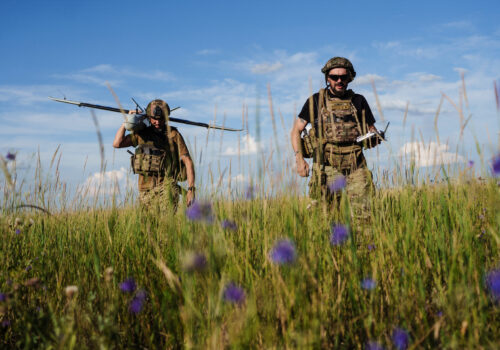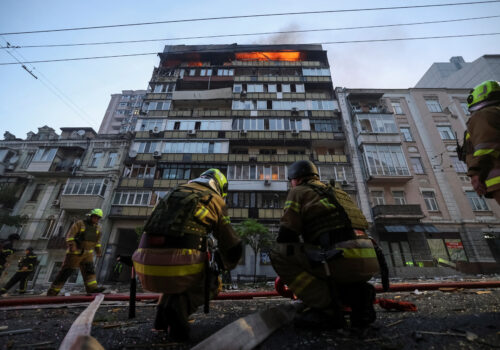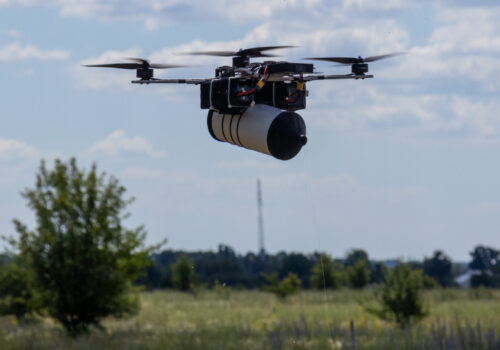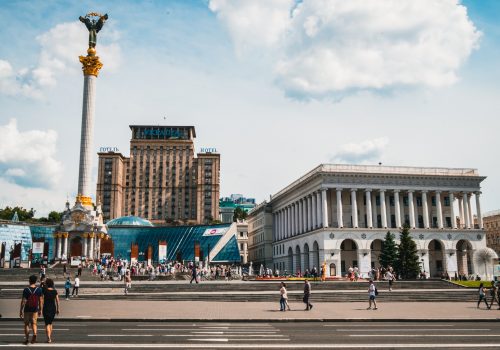US President Donald Trump is “very disappointed” with Vladimir Putin and is giving his Russian counterpart just ten more days to agree to a ceasefire or face new economic measures, he announced on Tuesday. Earlier in July, Trump had set a fifty-day deadline for the Kremlin dictator. This new time frame is the latest indication that the US leader’s patience is now running out, and comes following Trump’s recent decision to arm Ukraine by selling American weapons to European allies.
The Trump administration’s recent moves represent a striking departure from the diplomatic efforts of the previous six months, which had seen the United States offer Russia concession after concession while pressuring Ukraine to accept an overtly Kremlin-friendly settlement. During US-led negotiations that began in February 2025, Trump repeatedly signaled that he was ready to accept most of the Kremlin’s demands. This included allowing Russia to maintain control over occupied regions of Ukraine, ruling out Ukrainian NATO membership, and easing sanctions pressure on Moscow.
Trump was so eager to appease Putin that at one point he even reportedly explored the possibility of granting official US recognition for the 2014 Russian seizure of Ukraine’s Crimean peninsula. Meanwhile, White House officials further underlined the new administration’s accommodating stance by ceasing public criticism of Russia’s invasion and withdrawing from international efforts to hold the Putin regime accountable for war crimes committed in Ukraine.
Any settlement based on Trump’s proposals would have been easy to sell as a Russian success story. Indeed, many would have regarded it as an unprecedented triumph for the Kremlin. Despite these positive optics, Putin has remained unmoved. While the Russian ruler has consistently voiced his theoretical support for America’s efforts to end the war, he has in practice derailed any hope of meaningful progress toward peace by engaging in endless stalling tactics and insisting on maximalist demands that would mean the effective end of Ukrainian statehood.
This uncompromising Russian stance has placed Trump in an increasingly awkward position. After months of talking up the prospects of peace, he has now been forced to acknowledge that Putin has no intention of ending the war. This has set the stage for the recent change of tone from the White House, which has led to the renewal of US arms deliveries to Ukraine along with this week’s fresh ultimatum.
There is now much speculation over what Trump will do if, as expected, Putin ignores the latest US deadline and continues his invasion. There is also considerable debate over the potential implications of the US decision to provide Ukraine with weapons via Europe, with many questioning whether this military support will be on a sufficient scale to impact the future course of the war.
The real question, however, is why Putin chose to reject America’s generous peace terms. After all, Trump was offering his Kremlin counterpart an honorable exit from an enormously costly war that has undermined Russia’s global standing and has often threatened to spiral completely out of control. Why did Putin refuse to accept victory in Ukraine?
Stay updated
As the world watches the Russian invasion of Ukraine unfold, UkraineAlert delivers the best Atlantic Council expert insight and analysis on Ukraine twice a week directly to your inbox.
Putin’s most immediate reason for refusing to end the war in Ukraine is because he thinks he is winning. The Russian army is advancing at various points along the front lines, while Ukraine’s military is being methodically worn down. Although progress is proving exceptionally slow, there is no question that Putin currently holds the battlefield initiative and can reasonably expect to prevail in a war of attrition against a far smaller opponent.
Putin has also been encouraged by the limitations of international support for Ukraine. While Kyiv’s partners have provided substantial military and financial backing, this aid has consistently been subject to delays or restrictions due to domestic political considerations and widespread Western fears of possible Russian escalation. With his army seizing more territory and his opponents so easily intimidated, it not difficult to understand why the Russian leader might prefer to continue his invasion while awaiting what he sees as the inevitable Ukrainian collapse.
On the domestic front, Putin has a number of further practical reasons for preferring the harsh realities of war to the unpredictability of peace. Since 2022, he has succeeded in moving the Russian economy onto a war footing, with massive hikes in military spending and payouts to soldiers helping to offset the damage caused by international sanctions. Russian factories now work around the clock and are pumping out more armaments that all NATO member countries combined.
As a result of this shift to a wartime economy, millions of ordinary Russian families are far wealthier today than in 2022. At the same time, the results are highly uneven: Flooding the Russian economy with state subsidies has spiked inflation and forced the Kremlin to sharply raise interest rates, hurting many of the non-military companies that make up much of the real Russian economy.
Beyond the defense sector, Russian oil and gas exports have been redirected to new markets across the Global South. Meanwhile, Western companies that exited Russia in response to the war have been replaced by local alternatives, creating extensive enrichment opportunities for many within Putin’s inner circle. A ceasefire would place this entire economic model in jeopardy, with potentially destabilizing consequences for the country as a whole.
The full-scale invasion of Ukraine has produced similar dividends for the Putin regime politically. Since 2022, the Kremlin has exploited wartime conditions to complete Russia’s long post-Soviet journey from flawed democracy to dictatorship. Virtually all potential opponents of the regime are now exiled, jailed, or dead. The last vestiges of an independent media have been extinguished, while civil liberties have been further curtailed. There is no meaningful anti-war movement in today’s Russia. Nor is there any serious doubt that Putin will remain in power until the end of his current term in 2036, if he lives that long.
In the event of a peace deal, the Kremlin would also face the challenge of dealing with hundreds of thousands of demobilized Russian soldiers brutalized by the savagery of the war in Ukraine. Crucially, these men have grown accustomed to exceptionally large salaries and bonus payments that dwarf anything they can expect to receive if they head back to their provincial homes across Russia. The return of so many military veterans to civilian life would have potentially explosive consequences for Russian society, with significant numbers likely to engage in violent crime or other forms of destructive behavior. Putin is acutely aware that Red Army soldiers returning from the Soviet war in Afghanistan played a key role in the spiraling banditry of the 1990s. He will be in no hurry to risk a repeat.
Eurasia Center events

Putin’s refusal to accept Trump’s favorable peace terms is in part explained by his heightened expectations of victory and his sense of trepidation over the unpredictable implications of any negotiated deal to end hostilities. The decisive factor fueling Putin’s determination to continue the war, however, is his conviction that Ukrainian statehood poses an existential threat to Russia and must be extinguished altogether. This has always been the primary motive behind the invasion and reflects deep-rooted fears shared by Putin and other Kremlin leaders over the potential breakup of the Russian Federation.
Putin views Ukraine as an indivisible part of Russia’s historical heartlands and regards the modern Ukrainian state’s separation from Russia as a “geopolitical catastrophe” that symbolizes the injustice of the Soviet collapse. Like many from his generation, Putin is haunted by the grassroots pro-democracy campaigns and independence movements that fueled the fall of the USSR. This has helped to convince him that the consolidation of an independent and democratic Ukraine could spark the next stage in a Russian imperial retreat that began with the 1989 fall of the Berlin Wall.
Putin’s obsession with Ukraine as a potential catalyst for Russian imperial collapse has been increasingly evident throughout his reign. For much of the past two decades, he has insisted that Ukrainians are actually Russians (“one people”). In more recent years, he began attacking Ukraine more explicitly as an artificial “anti-Russia” that could no longer be tolerated. On the eve of the full-scale invasion, Putin took the highly unusual step of publishing an entire 5000-word essay detailing his rejection of Ukraine’s right to exist.
The actions of the Russian army in Ukraine have mirrored this genocidal rhetoric. In Ukrainian regions currently under Russian occupation, thousands of community leaders and patriots have been detained and dispatched into a vast network of prison camps. Those who remain are being forced to accept Russian passports and subjected to ruthless Russification, with all traces of Ukrainian statehood, culture, and history systematically erased.
The Kremlin’s carefully coordinated campaign to eradicate Ukrainian national identity reveals the central truth behind Russia’s invasion. The war that Putin first unleashed in 2014 and escalated in 2022 aims to destroy Ukraine as a state and as a nation. This helps to explain why Putin has shown such little interest in the terms offered by Trump. While the US proposal may have appeared attractive to outsiders, Putin knows he cannot risk a settlement that stops short of Ukraine’s complete capitulation. He is painfully aware that any peace deal guaranteeing Ukraine’s continued existence as an independent state would represent an historic Russian defeat. In other words, if Ukraine survives, Russia loses.
If Trump and other leaders wish to change the calculus in the Kremlin and convince Putin to end the war, they must learn the lessons of the past six months. Clearly, it is essential to transform the military realities on the ground and force Putin to question his current confidence in Russian victory. This means providing Ukraine with the weapons to defend its cities from bombardment, regain the initiative on the battlefield, and bring the war home to Russia. The West has the tools to do so. All that is missing is the requisite political will. Anything less will prolong the war and embolden Putin to escalate further.
Additional sanctions are also evidently required in order to upset Russia’s robust wartime economy and persuade Putin that continuing the invasion will eventually bankrupt his country. This will require far tougher measures against Russia’s energy exports, along with secondary sanctions targeting countries involved in helping Moscow bypass present measures. In parallel, the numerous European nations that continue to trade with the Kremlin should be unambiguously informed that this will no longer be tolerated.
Most of all, Western leaders must force Putin to abandon his imperial ambitions and finally accept the irreversible historical reality of an independent Ukraine. This will require far greater resolve than anything the West has demonstrated since 2022, but it is the only way to secure a sustainable peace.
Putin’s anti-Ukrainian crusade has come to define his entire reign, reflecting his burning ambition to reverse the verdict of 1991 and revive the Russian Empire. He has gambled everything on his ability to extinguish Ukrainian independence, and is prepared to go to almost any lengths in pursuit of this criminal goal. From Putin’s perspective, therefore, the stakes could hardly be higher and the benefits of continuing the war currently far outweigh the costs. This will only change if he finds himself confronted with the threat of military defeat in Ukraine and the very real prospect of a new Russian national collapse.
Peter Dickinson is editor of the Atlantic Council’s UkraineAlert service.
Further reading
The views expressed in UkraineAlert are solely those of the authors and do not necessarily reflect the views of the Atlantic Council, its staff, or its supporters.

The Eurasia Center’s mission is to enhance transatlantic cooperation in promoting stability, democratic values, and prosperity in Eurasia, from Eastern Europe and Turkey in the West to the Caucasus, Russia, and Central Asia in the East.
Follow us on social media
and support our work
Image: Russian President Vladimir Putin chairs a meeting with members of the government via video link at the Novo-Ogaryovo state residence outside Moscow, Russia. June 4, 2025. (Sputnik/Gavriil Grigorov/Pool via REUTERS)





